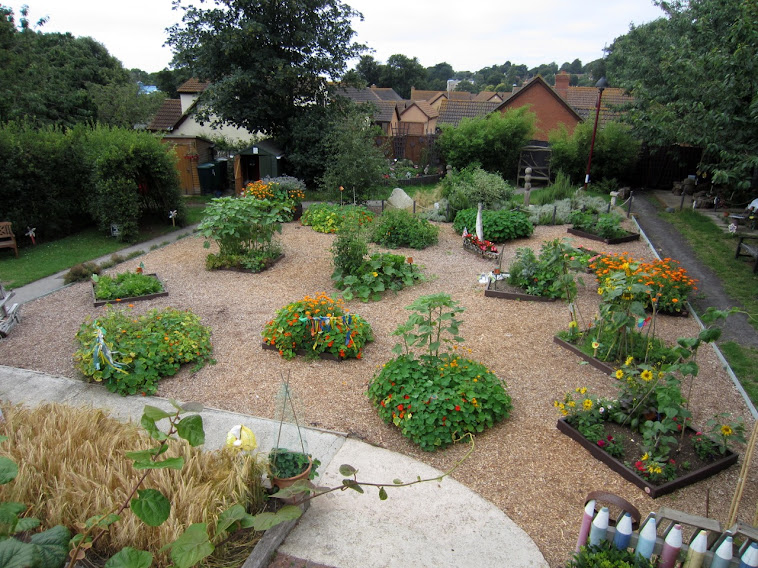Last weekend the garden group finally finished the new fence and gate into the school garden.
It was decided to make the gate a little more interesting and after a couple of suggestions the group finally got the jig saw out and cut the final pattern as seen in the pictures. With the fence and gate now complete the group can return to gardening matters. There is much to do! Over the past two weeks much of the garden has produced a lot of growth and this needs tying up or cutting back.
Two wild plants have appeared by the pond - namely Comfrey and Hedge Woundwort. Both plants are mentioned in old herbal books
 |
| Comfrey |
 |
| Comfrey flowers |
Comfrey is useful in the healing of minor wounds, both
internal and external and it can be used for minor injuries of the
skin, where it will work to increase cell production, causing wounds to
heal over rapidly. It can be used internally for stomach and duodenal
ulcers, where it will have the same effect. Comfrey is also helps sooth irritated tissues and reduces inflammation and assists with the healing of broken bones. Indeed an old name for the plant is Knitbone. It was known to the Romans for its healing powers
 |
| Hedge Woundwort |
The whole plant
is styptic in that its main use was to stem the flow of blood. The plant
also yields a yellow dye. The stem produces a strong fibre which was used historically. Modern day science has proved that the plant has natural anti septic properties.
Both plants are visited by bees. Certain flies are also attracted to them.. The shape of the flower means that only long tongued insects can get at the nectar
Remaining on the insect theme a new species was spotted in the garden in the week. It was a hover fly which mimics a red tailed bumble bee. It is called Merodon equestris.
 |
| Merodon equestris |
The picture is from the internet. The insect flew before the camera could be produced. Also known as the Narcissus bulb fly it feeds on pollen from the flowers of lilies and narcissus which includes daffodils!
The larvae of these flies are known pests found on the bulbs of these
flowers. This is unusual as most of the larvae of these species prey on aphids. It is thought that the mimicry helps avoid predation from birds.
The mosaic patches of long grass left about the garden are already paying dividends. A lot of native plants are now coming through including buttercups and red clover. The clover is especially important for bees. Long grass is favoured by many moth species including the Crambidae. These are small long thin moths which are often disturbed when sweeping through grass. Hopefully it will not be too long before these appear in the garden.
 |
| A typical Crambidae moth |
A lucky glance in the bee nest box revealed a Red Mason Bee actually building a nesting chamber. The bees have been very busy over the past week.
 |
| Red Mason Bee working on a new nesting chamber |
 |
| New cells showing the egg and deposited pollen store. |
Over the past year the population of these bees, and others, about the garden has increased considerably. Indication perhaps that the school garden continues to enhance and encourage wildlife.
Finishing with a shot of the intense blue sky today.
The echiums are still blooming and covered in bees. Five species were recorded on one spike. We are nurturing many plants which we hope will flower next year.

















































